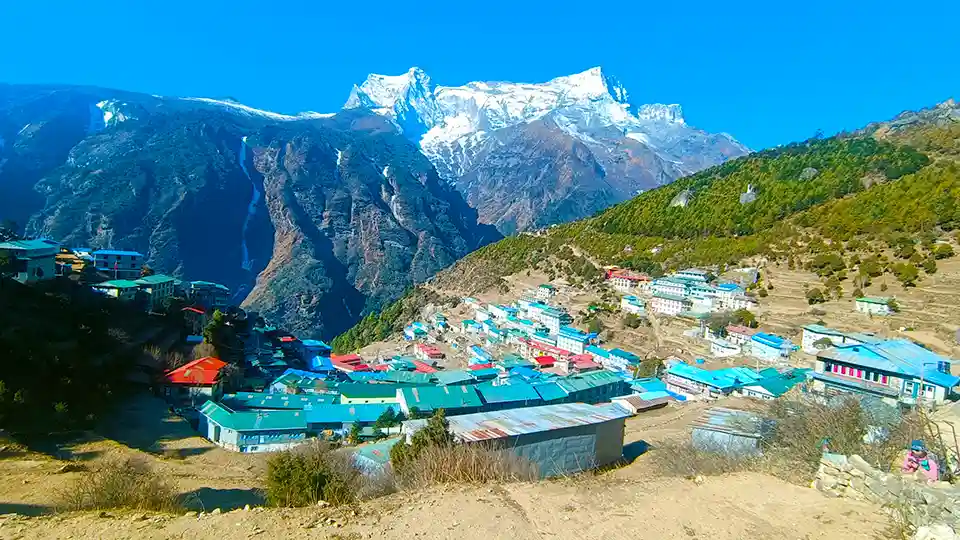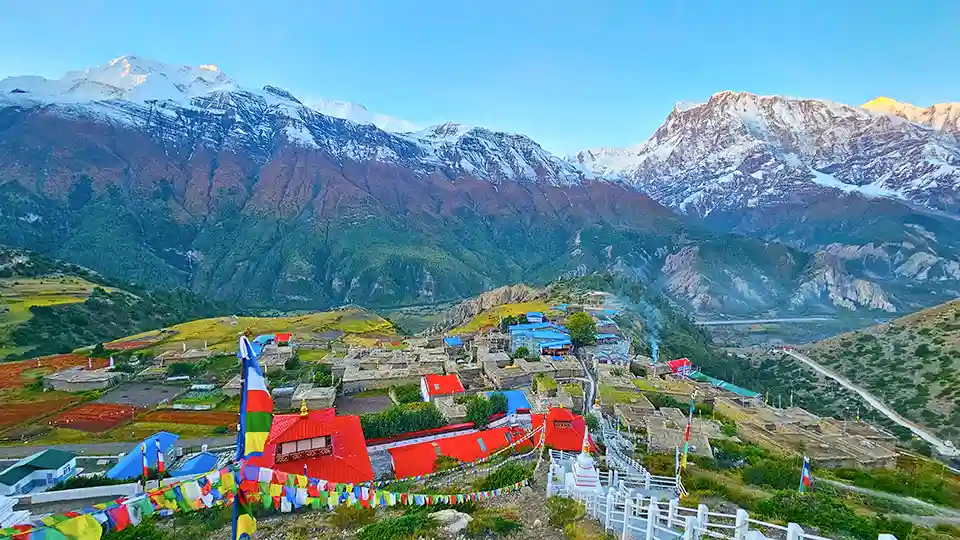Introduction Of Nepal Mountain Villages
There are very few high-altitude locations on the entire earth. And among those few locations, one is our very own Himalayas of Nepal. As you know, the Himalayas are famous for their high-altitude mountains and the inclusiveness of the world-famous mountains is something that the people of this world can’t ignore.
While we talk about the world-famous mountains of the Himalayas, comes the unique civilization of the Nepalese people which displays their special culture through their villages. Unlike many other high-altitude villages, Nepal mountain villages have diverse people living in different regions. If you have visited this mountainous country before, you must have a clear memory of these lovely villages of the region. If not, then don’t worry, today, in this blog, we will talk and explore the different beautiful Nepal mountain villages.
While we talk about these villages in Nepal, you will find that mountain villages in Nepal can be found up to 5000 meters. But normally, the mountain villages in Nepal are located at 2500 meters to 4000 meters. After walking for hours through the uphill routes and off-beaten paths, you will come to these high-altitude villages, where you will be warmly welcomed by the friendly locals in their teahouses and lodges.
In the popular regions, the villages of these mountainous regions are mostly made up for the tourists and their hospitality. In these villages, the tourists may get basic facilities but, they will get authentic services that blend with nature and the cultural vibe of the people living in those regions.
Many people who come to Nepal, mostly visit the cities like Kathmandu and Pokhara. But besides these two, today, we want to let you know that other villages in the mountains of Nepal will give you unforgettable experiences that these cities won’t be able to give. So without wasting any time let’s dive into these beautiful mountain villages of Nepal.
Namche Bazaar
Perched at an elevation of 3,440 meters, Namche Bazaar is the gateway to the Everest region and is known as a bustling trading hub of this region. Surrounded by snow-capped peaks, this village offers breathtaking views of Thamserku and Kongde Ri peaks. To be frank, this village is a true example of how a mountain village should look like.
- Namche Bazaar Nepal Mountain Villages
Here, visitors can also explore the local market that is filled with stalls selling traditional artifacts, handwoven textiles, and locally crafted goods. Hence, we want to say that the moment you step into this village, the vibrant Sherpa culture comes to life along with its monasteries, prayer flags, and warm hospitality.
Ghandruk village
Situated in the Annapurna region and on the way to the Annapurna base camp trek, Ghandruk is a picturesque Gurung village perched on a hillside at an altitude of 1,940 meters. The village is renowned for its traditional stone houses, terraced fields, and panoramic views of the Annapurna and Machapuchare mountains.
- Nepal Mountain Village Ghandruk
Ghandruk offers a serene escape with its charming tea houses and the opportunity to witness traditional Gurung dance performances, providing a window into the local culture.
Manang village
Located on the northern side of the Annapurna Circuit, Manang is a peaceful village at an altitude of 3,519 meters. Surrounded by high peaks, including Gangapurna and Tilicho, Manang is a perfect spot for trekkers seeking a peaceful retreat.
- Manang Village in Nepal Mountain
The village boasts ancient monasteries, prayer wheels, and traditional architecture, providing a serene atmosphere for reflection amidst the awe-inspiring Himalayan landscape.
Kyanjin Gompa
Situated in the Langtang Valley, Kyanjin Gompa is a sacred village at an elevation of 3,870 meters. The settlement has a magical atmosphere with its abundance of prayer flags and the snow-capped peaks surrounding it.
- Kyanjin Nepal Mountain Village in Langtang
Visitors can explore the ancient Kyanjin Gompa monastery, engage in meditation, and savor breathtaking views of Langtang Lirung. Also, the nearby Tserko Ri offers a challenging trek for panoramic vistas that will leave you in awe.
Khumjung village
Khumjung is a Sherpa settlement situated at an elevation of 3,790 meters in the Khumbu region. The village is renowned for its Hillary School and the Khumjung Monastery, which houses the purported scalp of a Yeti.
- Khumjung Mountain Village in Nepal
Khumjung offers a unique blend of tradition and modernity, with solar-powered homes and a museum showcasing Sherpa culture and mountaineering history. The village also provides stunning views of Ama Dablam and Everest.
Pangboche village
As one of the oldest Sherpa settlements, Pangboche lies at an altitude of 3,985 meters amidst the Everest region. The village is home to the Pangboche Monastery, believed to be one of the highest in the world.
- Pangboche village in Nepal Mountain
Surrounded by barley fields and juniper forests, Pangboche offers mesmerizing views of the Ama Dablam peak. This tranquil village serves as a spiritual haven for trekkers on the Everest Base Camp trek.
Thame village
Situated in the Khumbu region, Thame is a historic trading village at an elevation of 3,820 meters. This charming settlement is not only a gateway to the Renjo La pass but also displays a rich cultural heritage.
The Thame Monastery which dates back to the 17th century is a prominent attraction of this village. This village organizes the annual Mani Rimdu festival that showcases traditional masked dances. Also, this village provides a glimpse into the ancient trade routes that once connected Tibet and Nepal.
Kagbeni village
Located at the entrance of the restricted Upper Mustang region, Kagbeni is a medieval-style village at an altitude of 2,810 meters. The village is known for its narrow alleyways, traditional mud-brick houses, and the Kag Chode Thupten Samphel Ling Monastery.
Kagbeni offers a cultural crossroads with influences from Tibetan Buddhism and the ancient Bon religion. The village also marks the starting point for treks into the mystical landscapes of Upper Mustang.
Lho Village
Nestled in the Manaslu region, Lho Village is a cultural gem at an altitude of 3,180 meters. Surrounded by lush forests and with views of Manaslu and Ganesh Himal, Lho boasts intricate chortens, mani walls, and the Pungyen Gompa.
- Ancient Lho Mountain Village in Nepal Manaslu
The village’s rich Tibetan Buddhist heritage is evident in its traditional architecture and vibrant festivals. Lho provides a serene escape for trekkers on the Manaslu Circuit.
Nar Village
Situated in the remote valleys of the Annapurna region, Nar Village is a hidden gem at an altitude of 4,110 meters. Accessible via the Annapurna Circuit, Nar offers a tranquil retreat with its ancient monasteries, barley fields, and traditional stone houses.
- Ngawal Nepal Mountain Villages in Annapurna
The village provides a glimpse into the Nar Phu Valley, which is primarily known for its unique Tibetan-influenced culture and stunning landscapes.
Dho Tarap Village
Dho Tarap Village, nestled within the rugged landscapes of the Dolpo region at an elevation of 4,090 meters, offers a unique and remote cultural experience. The village is surrounded by barren hills, high mountain passes, and traditional stone houses that stand as testaments to its ancient heritage.
With its preserved Bon monasteries, Dho Tarap provides a glimpse into pre-Buddhist traditions, offering a rare opportunity to witness a way of life largely untouched by modernity.
Conclusion
Now as we have introduced the famous mountain villages of Nepal, it’s upon you to decide which one to visit. Be sure that every mentioned village in this blog represents the culture and the natural beauty of the Himalayas. The uniqueness, history, and charm make these villages truly exceptional from the cities and the urban areas of the country.
From the lively streets of Namche Bazaar to the peaceful surroundings of Manang and Kyanjin Gompa, each village offers a unique experience. Whether you seek spiritual serenity, cultural immersion, or simply a breathtaking escape into nature, Nepal’s mountain villages call with open arms, inviting you to explore the captivating beauty of the Himalayas.
















